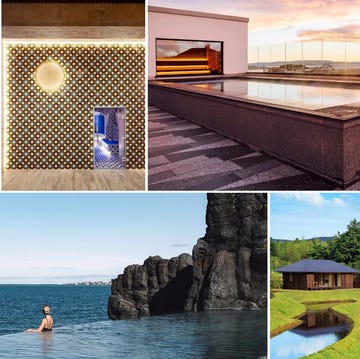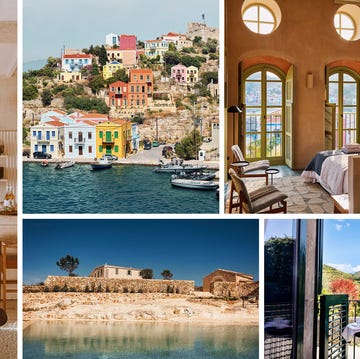There are few countries as dedicated to embedding philosophies of beauty into all aspects of culture as Japan, where the influential concepts of wabi-sabi (a reverence for patina and transience), kintsugi (repairing cracks with gold to honor imperfections), and shinrin-yoku (forest bathing) originate.
After a strict Covid policy resulted in the country closing its borders for almost three years, David Prior, founder of the bespoke travel company Prior, says that there is an overwhelming demand for trips to Japan. These days, rather than heading straight for the bright lights and buzz of Tokyo, many are choosing to visit the country’s slower-paced cultural hubs, like Kyoto and Nikko, or more far-flung locales. Prior points to Kanazawa as an example of one of these emerging bucolic destinations, drawing in-the-know travelers to its artisanal culinary and crafts scenes. The country is also encouraging this trend; there’s a push to entice young Japanese creatives to revive communities in the countryside.
On the Goto Islands, Goto Retreat was designed by the late Yukio Hashimoto to showcase the rugged coastal landscape. Guests can indulge in locally sourced cuisine and partake in traditional activities like camellia-oil pressing. (The plant grows wild on the islands.) In Kyoto, legendary architect Tadao Ando has designed the Shinmonzen, a stunning nine-suite property with a discreet wood-timber facade and modern interiors appointed with contemporary art.
In the mountain resort of Karuizawa, the new Shishi-Iwa House complex is made up of three wood and glass buildings within walking distance of several onsen (hot springs). And at Zenagi, a renovated 300-year-old villa perched on a hill in a farming village in Kiso Valley, there are guided visits to master craftspeople and to Mount Ontake, a sacred volcano.
But it’s not just fashionable hotels that are attracting visitors to Japan’s countryside; there are also ambitious art spaces such as Enoura Observatory—a complex south of Odawara with gardens, outdoor stages, and a gallery designed by artist Hiroshi Sugimoto—and Echigo-Tsumari Art Field, which sets contemporary art installations in abandoned houses and terraced rice fields in a rural region of Niigata Prefecture.
The most established of these pilgrimage-worthy destinations is Benesse Art Site, on the islands of Naoshima, Teshima, and Inujima, a formerly industrial archipelago located in the Seto Inland Sea, which have been transformed over the past three decades by the billionaire art collector Soichiro Fukutake. With an evolving project that includes installations by James Turrell and Yayoi Kusama (her yellow polka-dot Pumpkin sculpture is installed on a pier), Fukutake—and Japan, for that matter—is in many ways reinventing what a museum can be.
This article was originally featured in the May 2023 Issue of Harper’s Bazaar

















